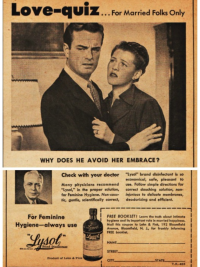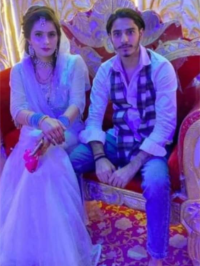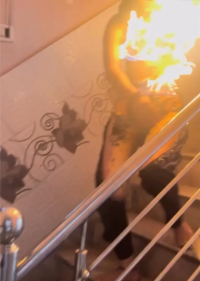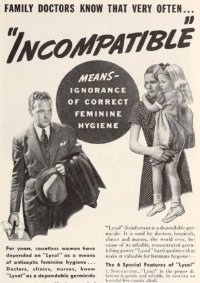Get ready for some wild fuck shit that actually had me stunned but no one fuckin likes to hear this stuff,

Attractiveness of women with rectovaginal endometriosis the 2013 study-
https://pubmed.ncbi.nlm.nih.gov/22985951/
This study was conducted at the Department of Obstetrics and Gynecology, Università degli Studi di Milano (University of Milan), Italy.-
University of Milan school of medicine
https://share.google/sEK4jWF3FGPYsDr1h
In 2013, the journal Fertility and Sterility published a case-control study titled "Attractiveness of women with rectovaginal endometriosis". The research was funded by the University of Milan medical school. It reported that women with rectovaginal endometriosis (a severe form) were rated as "attractive or very attractive" by independent male and female observers more often than two control groups, also suggesting these women had leaner silhouettes and larger breasts .
The paper also gathered measurements (BMI, waist-to-hip ratio, breast to under breast ratio) and sexual history (noting earlier age of first intercourse), and included only white women.
Participants were not aware they would be judged for attractiveness during medical visits.
It's actually quite angering to a point of laughter knowing these fuckers after having there article retracted in 2020 putt out there "apology" stating
This article has been retracted at the request of <the Authors.-- and if this can even be a correction the public backlash in 2020 almost certainly pressured there decision. For seven years, the paper stood without general issue, Once it went viral and was widely condemned, the authors then asked for it to be withdrawn.
And so technically the authors requested the retraction but it only happened after others called it out very publicly.
The entire group of investigators contributing to this study requests to withdraw this article is what is claimed.
"We conducted the study in good faith and according to correct methodology. We believe that our findings have been partly misinterpreted, but at the same time realize that the article may have caused distress to some people. Women's respect is a priority for us and we are extremely sorry for the discontent the publication originated"
And Yes, the study existed and was conducted as described, but it is now marked as retracted at the authors' request and is now recognized as problematic to not everyone but vast amount of people.
The study conducted did not investigate causes or therapies for endometriosis, instead, it judged participants' appearance, which had no clinical value for treatment or understanding of the disease.
The claim that researchers "looked at how attractive the women were instead of investigating causes or treatments" aligns with the criticism, as the line of questioning primarily focused on physical appearance rather than advancing medical knowledge.
You see Endometriosis affects roughly 190 million women globally of reproductive ages causing symptoms like pelvic pain, fatigue, infertility, and sometimes internal bleeding or bowel issues but the exact cause remains unknown .
Patient advocates frequently highlight the underfunding and misalignment of research, where studies like this divert attention from much needed medical breakthroughs, symptom relief, and supportive care
And why was It truly redacted,
1. controversy after going viral and gaining backlash like the fact of exclusion only taking white women.
2. Participants were not informed they would be judged on attractiveness raising serious ethical concerns around informed consent.
3. Critics questioned the scientific validity and usefulness of the methodology, seeing no clear relevance to clinical understanding of endometriosis.
4. Many in the medical and advocacy communities disapproved of the study's framing and messaging, calling the publication objectifying and inappropriate.
(-Who participated-)
Women included:
300 women total:
100 with rectovaginal endometriosis
100 with ovarian endometriosis
100 healthy controls
And How long / how often did women come in?
Well the paper itself does not describe women returning multiple times for long term observation.
Instead, attractiveness ratings were made once, based on photographs taken during their preoperative gynecological evaluation.
Independent "raters" (both male and female physicians) later judged these photos for "attractiveness."
So participants didn't repeatedly come in for weeks they were likely in the hospital/clinic for standard medical appointments tied to their
surgery,,, makes it all the more fucked up,,,
Anyhow What did the women think they were there for, as we now know they had no clue about this other " research " being conducted,,
The participants believed they were attending normal medical visits in preparation for gynecological surgery.
Like What women thought:
They believed they were there for pre-surgical medical exams, not for attractiveness research.
They were not informed that their photos would be evaluated for physical attractiveness..
That lack of informed consent is one of the main ethical issues that led to the backlash and eventual retraction.
What the women actually did
At the pre-surgery visit (3–4 weeks before surgery), each woman:
1. Completed a standardized questionnaire – covering demographics, habits, medical/gynecologic history, and sexual history (including age at first intercourse, number of sexual partners, etc.).
2. Underwent physical measurements – height, weight, waist, hip, breast, and under-breast circumference.
3. Photographs were taken – frontal photos in underwear, according to standardized instructions.
4. Rated for attractiveness – four independent physicians (two male, two female) evaluated the photos and rated each woman's "overall physical attractiveness" on a 5-point Likert scale (1 = very low, 5 = very high).
The physicians doing the attractiveness ratings were not the same doctors performing the exams.
Raters were blinded to the women's diagnoses but not blinded to the study's purposes in rating attractiveness,, so they still followed through with the " research " without question, later they got push back and the backlash and suddenly they regretted being apart of the study.
Now Here's the timeline, step by step:
Jan 2006 – Mar 2011 → Recruitment and data collection at the University of Milan (photos, measurements, questionnaires).
2011–2012 → Data analysis, writing, and peer review.
September 2012 → The paper was first accepted and posted online ahead of print in Fertility and Sterility.
January 2013 → The study was officially published in print (Fertility and Sterility, Vol. 99, Issue 1, pp. 212–218).
The paper stayed in the journal for 8 years before being retracted in 2021..
all the photos and measurements were gathered over those five years
That means by the time the public even saw the study, some of the women's data had been sitting in the researchers' files for up to 7 years.
woman participated in early 2006, there photos and data sat in the researchers' files for roughly 6–7 years before publication.
Other patients who joined later and participated in 2011, there data sat for only about 1–2 years before publication.
The women's private data (photos, body measurements, sexual history) stayed in the researchers' files and in use for 10–15 years before the study was formally discredited.
The published article itself was in circulation for 8 years before it was withdrawn.
Some participants' involvement (2006 recruits) lasted a decade and a half before the scientific record admitted the study should not have existed in that form,,
their data stayed in circulation for up to 15 years before the journal admitted the study was inappropriate.
patients where again here for real health issues as most participants needed some kind of surgical assistance, so Surgery lengths for patients typically 3–4 weeks after the pre-op evaluation.
So Before the Retraction:
The photos and questionnaires were kept in the research files at the University of Milan, just like any other clinical research data.
They were never made public — the published article only reported summaries and ratings (e.g., "Group A had higher attractiveness scores"), not the actual pictures.
The study methods said the data were stored and used for analysis during 2006–2012.
Now After the Retraction in (2021) :
1. The journal's role
Journals do not have access to raw data (like photos). They only retract the article itself.
Retraction doesn't delete the data; it only marks the publication as invalid/unethical.
And
2. The university's role
Under EU/Italian research rules, the University of Milan (not the journal) is the legal custodian of the raw data.
By law, research data often must be archived for at least 10 years after study completion.
Since this study ended in 2011, the data would normally be stored until at least 2021 presumably,
And now!! What's unknown! :
The retraction notice did not say whether the photos and questionnaires were destroyed afterward.
The University of Milan has not issued a public statement about disposal or retention.
In theory, they may still be archived internally, unless there was a specific directive to destroy them after the backlash.
Retraction doesn't delete the data; it only marks the publication as invalid/unethical.
Anyway random stuff.


































